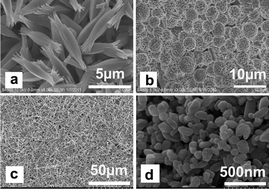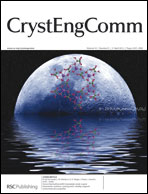Precise control over size and morphology of metal–organic frameworks (MOFs) is challenging but important for extending these hybrid materials to many more advanced applications, in particular for nanotechnology and device integration. Through exploring the reaction parameters during the synthesis of the Eu–MOFs, fascinating crystals morphologies, including urchin-like balls, straw-sheaf and nanocrystals have been obtained by solvothermal treatment. Details of the formation mechanism of the resulting crystal morphology were investigated. All samples were characterized by X-ray powder diffraction, high resolution scanning electron microscopy, infrared spectroscopy and thermal gravimetry. The experimental results show that the formation of Eu–MOF is extremely sensitive to the synthesis conditions, hence resulting in different morphologies. These well-arranged architectures exhibit red emission corresponding to the 5D0-7F2 transition of the Eu3+ ions under UV light excitation, and the lifetime is determined to be about 0.663 ms

You have access to this article
 Please wait while we load your content...
Something went wrong. Try again?
Please wait while we load your content...
Something went wrong. Try again?


 Please wait while we load your content...
Please wait while we load your content...